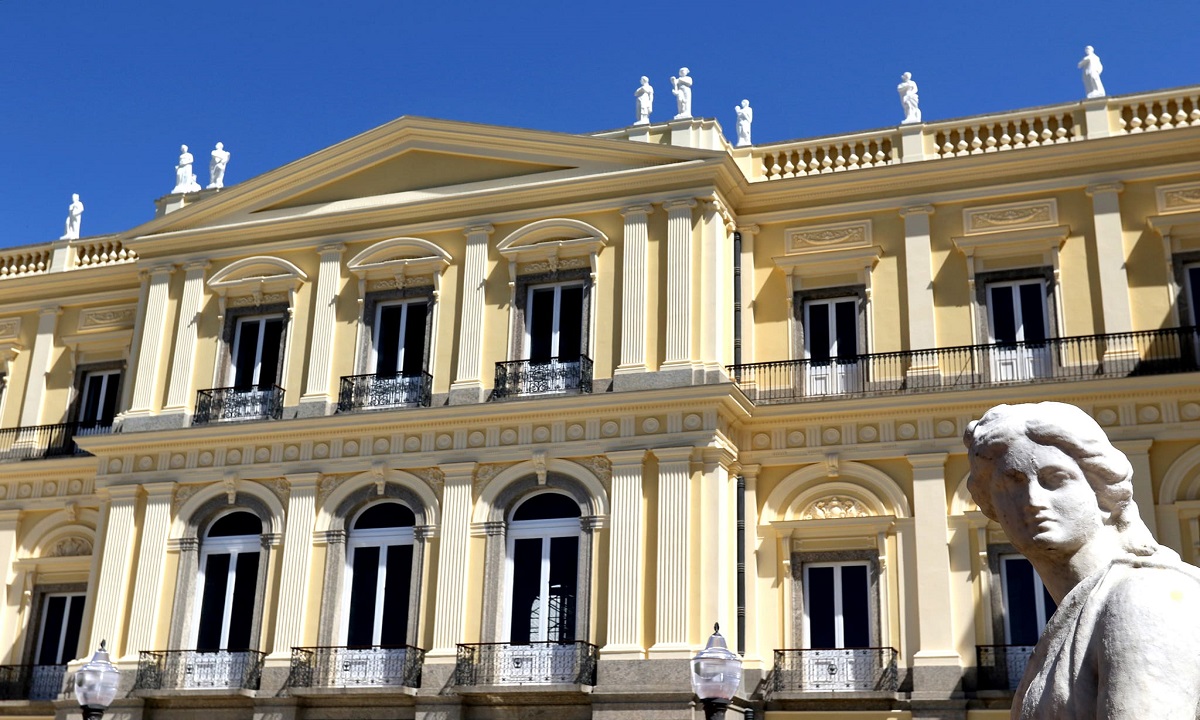The museum has been in the process of rebuilding and reorganizing the collection since 2021. The exhibitions must remain closed to the public until 2026.
2 hours ago

Photo: Tania Rigo/Agencia Brasil
The National Museum took its first steps to return to the sights map of Rio de Janeiro last Sunday, when it opened its doors to celebrate the 205th anniversary of the institution, which it celebrated on Tuesday (6).
Although 85% of the collection was destroyed in a fire in 2018, the site has offered more than 20 activities to encourage scholarly publication and resumption of the historic site.
The structure has been undergoing ensemble reconstruction and realignment since 2021. Some of the fire-damaged pieces were salvaged while others were acquired through donations. Meanwhile, the museum is trying to maintain its educational activities, which has always been the leader in attracting visitors.
We now have an opportunity to restructure this organization and give it more dynamism. Being more relevant to the 21st century and focusing on that relationship with the public.” He said Igor Rodriguez, current head of the Museum’s Educational Assistance Department.
Rodrigues says the National Museum has expanded its project portfolio and continues to develop educational materials that go to schools—an activity that began in the 1950s, and exhibitions are expected to open soon.
A little history
Before it was the National Museum, the imposing structure at Praça Quinta da Boa Vista was the Royal Museum and was located in Campo de Santana, in the central area of Rio de Janeiro.
The building was inaugurated on June 6, 1818, during the government of D. João VI, when the city was still the capital of the United Kingdom of Portugal, Brazil and the Algarves.
From the beginning, the site housed collections of scientific interest, such as the Natural History House collection, which has been in existence since 1784. There were pieces of mineralogy, stuffed birds, and original artifacts.
Only after the proclamation of the Republic, in 1889, the building began to be called the National Museum. In 1892, he moved to the Paço de São Cristóvão, the former official residence of the Portuguese royal family and the Brazilian imperial family.
Iphan (National Institute of Historical and Artistic Heritage) incorporated the building in 1938, when the institution was already the largest collection of history and natural sciences in Latin America. In 1946, the UFRJ (Federal University of Rio de Janeiro) took over the institution, which continues to this day.
The inauguration of the work that revived the façade after the fire that occurred in September last year (pictured).
What is in the National Museum
Until the 2018 fire, one of the most important items in the collection was the fossil Luzia, which was found in Lagoa Santa (MG) in 1974 and is considered the oldest inhabitant of the Americas. Archaeologists have found the skull and bone of Luzia among the rubble.
Another notable item was the Bendegó, the largest meteorite ever found in Brazil, weighing 5.36 tons. It is estimated that the celestial body was 4 billion years old and came from a region in the solar system between Mars and Jupiter. The piece fell into the hinterland of Bahia and entered the collection in 1888.
In 1826, Emperor Dom Pedro presented the museum with a valuable collection of Egyptian mummies. It was the largest in Latin America, with mummies of adults, children, and animals—including cats and crocodiles. No fewer than 200 of the more than 700 items in the Egyptian collection been recovered.
The restorers also succeeded in saving 30% of the Empress Teresa Christina’s collection, which brings together objects produced between the 7th century BC and the 3rd century AD in the cities of Pompeii, Herculano and Vieux.
The current schedule is that the works in the interiors, in the gardens and in the exhibition spaces will take place from 2024 to 2027. It is expected that a part of the museum will be open to visit from 2026. The estimated cost of the work is R$450 million.
In the meantime, you can check out items from the National Museum on the official website. Access here.

“Wannabe internet buff. Future teen idol. Hardcore zombie guru. Gamer. Avid creator. Entrepreneur. Bacon ninja.”
